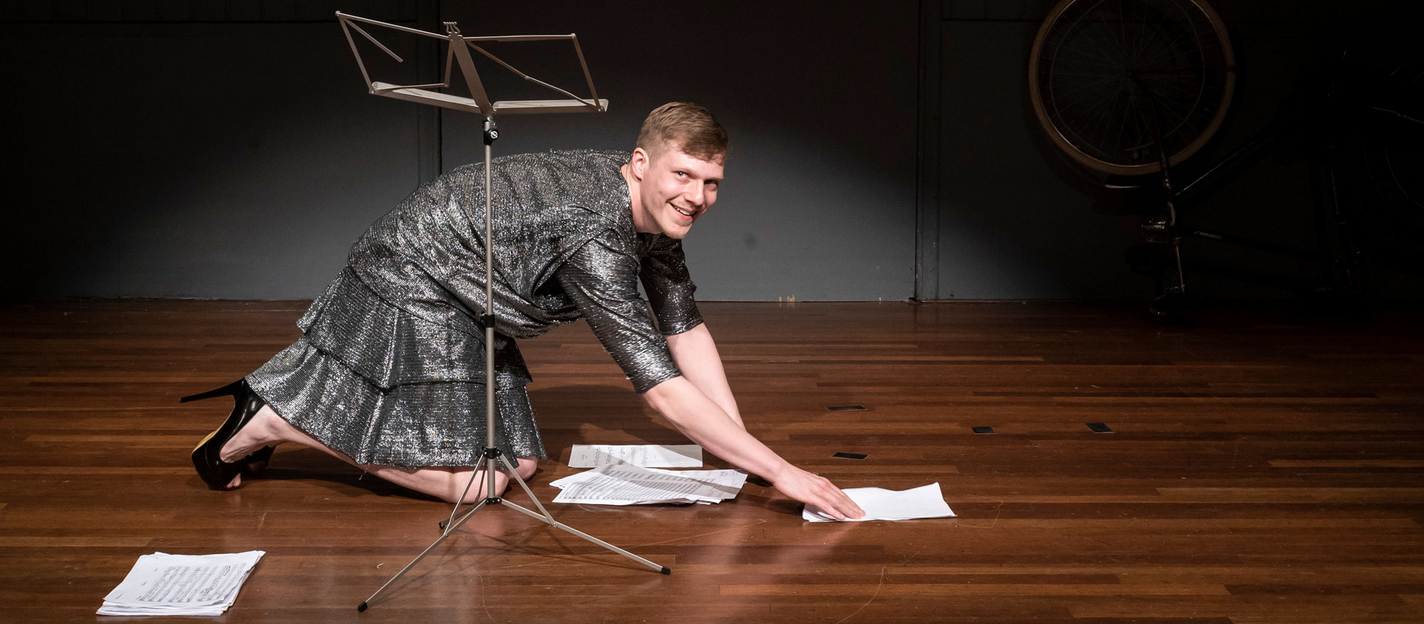
Copyright
You always have to deal with copyright in the arts. If you have made (created) something as a self-employed that somebody else wants to publish or adapt, it can earn you money. If you want to publish or adapt something that another person has made, you might have to pay to use it. If you are employed, this is a concern for your employer.
On this page
Discipline specific
What is copyright?
So copyright has a high business component. At the same time it is about what makes art what it is, because a work can only be copyright if it has an original character, a personal stamp and a form.
The right of personality (the moral right) protects the integrity of the work: that is the non-material side of copyright. The right of exploitation is the material side of copyright. This is the exclusive right of the maker to publish and to reproduce (to copy, adapt, or cast in a different form, such as making the film of a book). Other parties require permission of the maker.
Registration of work
Copyright on a work occurs already by creating a work, but to be able to proof it, it is useful to register your work. If there is a conflict in which one party accuses the other of plagiarism, the date of registration prevails. You can register a work or idea with the notary or with the Benelux Office for Intellectual Property. Another possibility is to send the idea by registered mail (when receiving the envelope leave it closed) or send registered e-mails to yourself.
Transfer of copyrights or licenses
Transferring your copyright is the most far-reaching option: another person or organisation receives or buys the rights that you owned yourself first. You can also arrange the right of another person or organisation to use your work by granting a license (permission) to that other person or organisation. In that case, you will specify in an agreement for which purpose, under which terms and conditions, and for which period your work may be used by another person or organisation. You will remain the copyright holder yourself, merely conferring your rights temporarily. If it is a success, you can renegotiate the terms and conditions after the agreed period has passed. Creative Commons licenses enable creators to release their copyright-protected work for specific forms of reuse, without relinquishing copyright.
The transparency obligation is new. This means that an organisation, when transferring or licensing your copyright, must provide you with information about the exploitation, such as the forms of exploitation, the income and the fee to be paid.
International
In 1886, the Berne Convention for the Protection of Literary and Artistic Works was adopted. This has now been signed by 187 countries (as of 2019). The guiding principle in this regard is that the origin of your copyrights is in the country where you first published your work. If you want to exploit your work abroad, you have to deal with the legislation and regulations that apply there. These are other agreements and remunerations than those which you would be entitled to in the Netherlands. New rules are being worked out in the European Union in order to further reduce the differences between copyrights within the member states. Dutch copyright organisations often have contacts with sister organisations in other countries and can help you on your way and provide information.
Sociocultural levy
The so-called ‘sociocultural levy’ (sociaal culturele heffing, SoCu levy) is a common deduction from your copyright fee (mainly in Europe). The money deducted goes to social and cultural causes, often via a so-called ‘social fund’. In this way, the funds are credited to you as rights holder, your creative achievements and the interests of the professional group. Buma/Stemra, Sena, Lira and Pictoright spend this levy on a social fund or other facilities.
Exploitation by organisations
There are a number of collective management organisations for copyrights. If you are considering joining such an organisation, weigh up the advantages and disadvantages and check the legal aspects. Do you want to transfer the exploitation, do you want to give out licenses or is the organisation only working as an intermediary? If you transfer your rights, you cannot get them back.
Copyright and visual art
Successive copyright
Right of intellectual property is an umbrella term covering such rights as copyright, design copyright, trade name copyright and patents. The successive copyright refers to the right of makers of original graphic or visual works of art to a percentage of the price if their work is resold.
Appropriation Art guideline
It happens that visual artists have mutual copyright disputes. This often concerns the use of the work of one maker in the work of another maker. Under the Copyright Act, this is actually not allowed, unless it falls under the parody exception and the quotation exception.
Pictoright uses the Appropriation Art guideline for an internal assessment. It maintains copyright in such a way that the artistic freedom of creators is restricted as little as possible. On the other hand, Pictoright also ensures that existing work is not used without limits under the guise of the same artistic freedom. They use the guideline to test whether the use of 'work in work' is reasonably acceptable. If that is the case, Pictoright will generally not take action, although in some cases this might have been strictly speaking under the Copyright Act. No rights can therefore be derived from the guideline.
Copyright organisation visual art
Pictoright is the copyrights organisation for visual creators in the Netherlands such as illustrators, artists, graphic designers, photographers and architects. Pictoright distributes collective royalties, manages copyrights for artists and strives for a better copyright position for image creators.